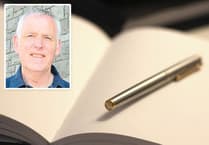I can’t imagine there was ever a dull moment when Benjamin Lay was around. Lay, who was born in 1682 was no giant – he was a mere four feet seven inches tall – but he stood head and shoulders above his contemporaries, particularly those he lived alongside on the beautiful island of Barbados.
I reckon few of us would have enjoyed living there in the eighteenth century though. Despite its beauty, slavery was rampant and it would seem that slaves were treated so badly that even the Marquis de Sade (from whose name we get the word sadism) commented on the cruelty of the plantation owners.
Sadly, I had never heard of Lay’s remarkable story until I was given a copy of Tom Holland and Dominic Sandbrook’s ‘The Rest is History’ as a Christmas present. Having read it, I would recommend it to anyone because it certainly does give us some amazing insights into some of the ‘most curious moments in history’.
Benjamin Lay was clearly a product of his culture which is why he readily whipped the slaves he caught shoplifting from his store. But everything changed when it dawned on him that they were starving.
He and his wife began to feed them, and then, we are told ‘sympathy rapidly progressed to outrage – and to action’. As a result, they became ‘such unpopular dinner party guests that they were driven out of the island’.
They moved to Philadelphia only to discover that slavery was just as rife there. They settled in nearby Abington and began to have an impact there.
Lay wasn’t the first person to call for an end to slavery, of course, but it’s easy to see why these two distinguished historians have claimed that he was the first to ‘deploy stunt techniques more commonly associated with modern pressure groups.’
This sort of behaviour didn’t make for an easy life and, following his wife’s death, Lay ‘became so unpopular with influential Quakers (he was a Quaker himself) that he went to live in a cave, accompanied by goats, fruit trees and 200 books’! But he did have his day because as he lay dying, he was informed that the Philadelphia Friends had voted to discipline any Quaker owning or trading in slaves and less than 30 years later Pennsylvania became the first state to pass legislation ending slavery.
As I read Lay’s intriguing story, I wondered why I had never heard of him before, but more importantly I also found myself reflecting on some of the lessons we can learn from his behaviour. There was the role of his faith of course, a faith that convinced him that the practice of slavery is completely at odds with the fact that God has created every one of us in His own image. Having said that though, his story is also a reminder that the church’s values can often be shaped by the values of its surrounding culture and not by God’s truth. Sadly, there are sections of the church that are falling into the same trap in our day too.
Then there was Lay’s willingness to change his mind. This can be a very difficult thing to do, of course, but it’s worth remembering that a willingness to admit you are wrong is a sign of maturity and strength and not of weakness.
Finally, I would suggest that Benjamin Lay teaches us that we do not need to occupy a formal position of leadership to be an inspirational leader. As the late great Rabbi Lord Sacks has argued, leaders don’t conform for the sake of conforming because they ‘have a vision, not of what is, but of what might be. They think outside the box. They march to a different tune.’
We can all do that, as Alan Bates - of recent Post Office fame - has shown so vividly. Indeed: the more I think about it, the more I get the feeling that Alan Bates and Benjamin Lay would have got on very well if they’d ever had the chance to get together.




